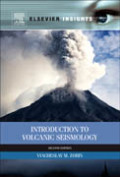
Volcanic earthquakes represent the main and often the only instrument to forecast volcanic eruptions. This book is the first monograph about seismicity in volcanoes. It describes the main types of seismic signals in volcanoes, their nature and spatial and temporal distribution at different stages of eruptive activity.The book begins with an introduction to the history of volcanic seismology, discusses the models developed for the study of the origin of volcanic earthquakes of both a volcano-tectonic and eruption nature. The next three chapters give case histories of seismic activity associated with 34 eruptions in 17 basaltic, andesitic and dacitic volcanoes throughout the world from 1910 to 1998. Chapters 8 to 10 describe the general regularities of volcano-tectonic earthquakes, their participation in the eruptive process, source properties, and the hazard of strong volcano-tectonic earthquakes. The following three chapters are devoted to the description of eruption earthquakes: volcanic tremor, seismic noise of pyroclastic flows, and explosion earthquakes, with a special discussion on their relationship to eruptive processes. The final two chapters discuss the mitigation of volcanic hazard, the methodology of seismic monitoring of volcanic activity, and experience with forecasting volcanic eruptions byseismic methods. Provides a comprehensive overview of seismic signals at different stages of volcano eruption.Discusses dozens of case histories from around the world to provide real-world applications.Illustrations accompany detailed descriptions of volcano eruptions alongside the theories involved.
- ISBN: 978-0-444-56375-0
- Editorial: Elsevier
- Encuadernacion: Cartoné
- Páginas: 512
- Fecha Publicación: 01/12/2011
- Nº Volúmenes: 1
- Idioma: Inglés
